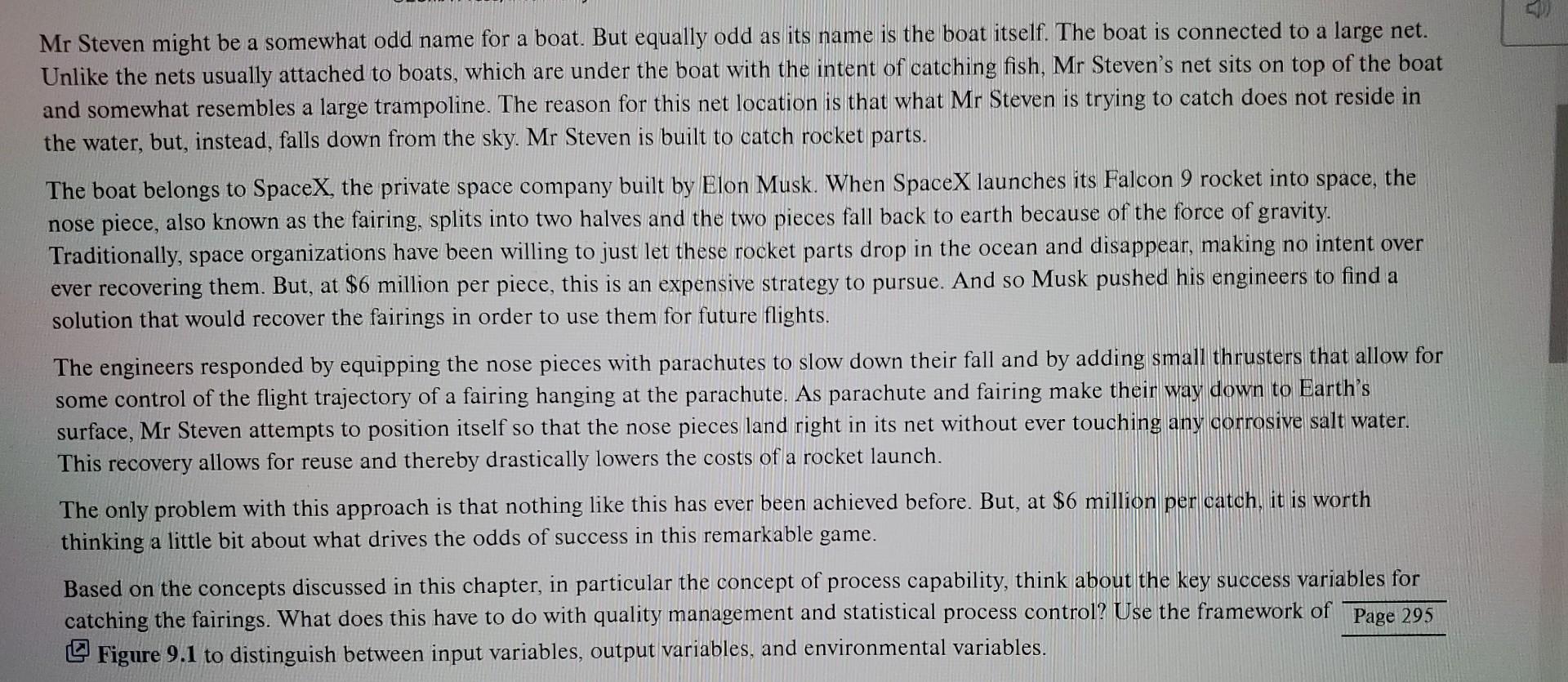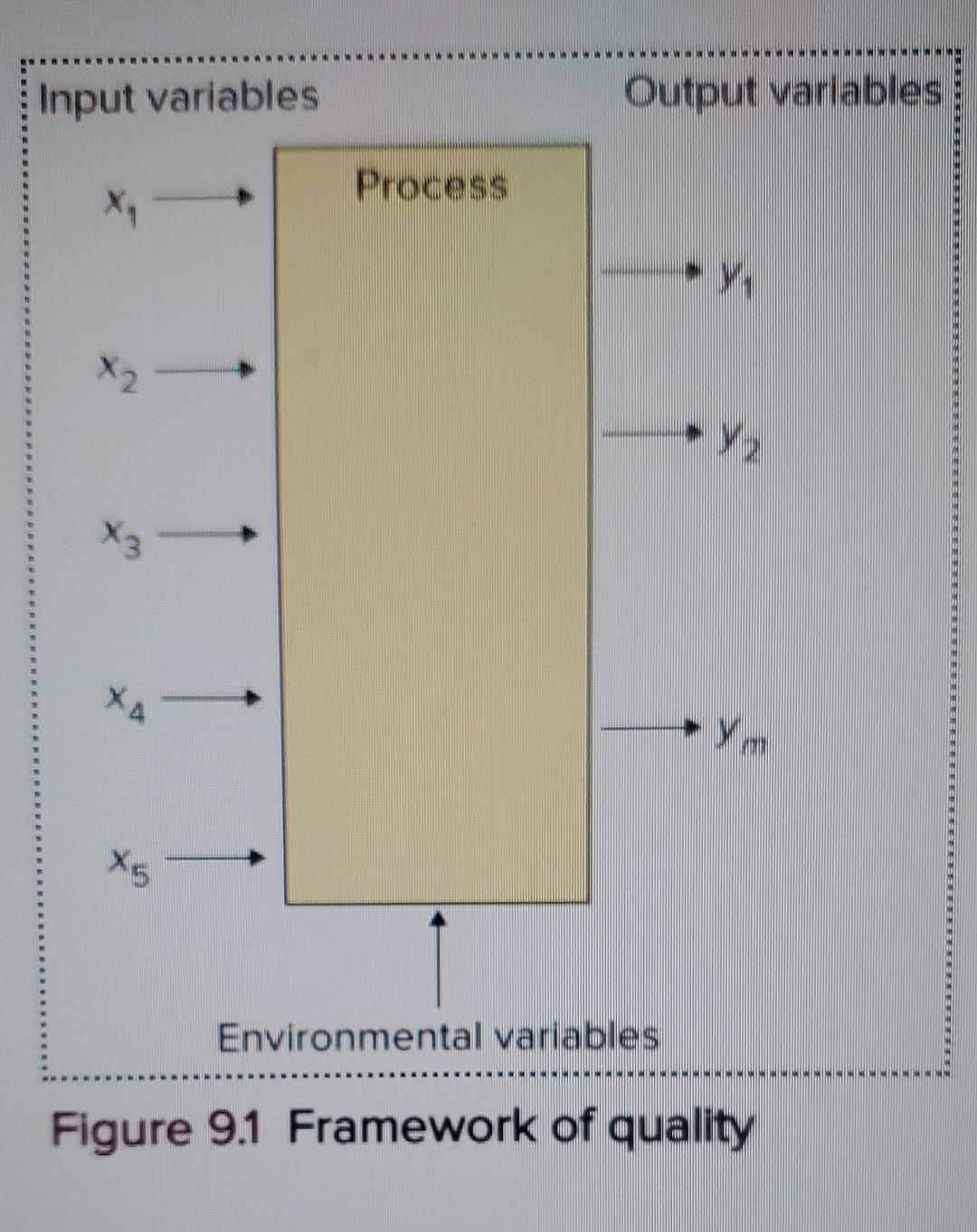Answered step by step
Verified Expert Solution
Question
1 Approved Answer
Catching Rockets Case (page 294) Q: What, in the case of Mr. Stevens, drives the specification limits in the process capability formula? Q: And, what
Catching Rockets Case (page 294)
Q: What, in the case of Mr. Stevens, drives the specification limits in the process capability formula?
Q: And, what determines the variability that is in the denominator of the formula?


Mr Steven might be a somewhat odd name for a boat. But equally odd as its name is the boat itself. The boat is connected to a large net. Unlike the nets usually attached to boats, which are under the boat with the intent of catching fish, Mr Steven's net sits on top of the boat and somewhat resembles a large trampoline. The reason for this net location is that what Mr Steven is trying to catch does not reside in the water, but, instead, falls down from the sky. Mr Steven is built to catch rocket parts. The boat belongs to SpaceX, the private space company built by Elon Musk. When SpaceX launches its Falcon 9 rocket into space, the nose piece, also known as the fairing, splits into two halves and the two pieces fall back to earth because of the force of gravity. Traditionally, space organizations have been willing to just let these rocket parts drop in the ocean and disappear, making no intent over ever recovering them. But, at $6 million per piece, this is an expensive strategy to pursue. And so Musk pushed his engineers to find a solution that would recover the fairings in order to use them for future flights. The engineers responded by equipping the nose pieces with parachutes to slow down their fall and by adding small thrusters that allow for some control of the flight trajectory of a fairing hanging at the parachute. As parachute and fairing make their way down to Earth's surface, Mr Steven attempts to position itself so that the nose pieces land right in its net without ever touching any corrosive salt water. This recovery allows for reuse and thereby drastically lowers the costs of a rocket launch. The only problem with this approach is that nothing like this has ever been achieved before. But, at $6 million per catch, it is worth thinking a little bit about what drives the odds of success in this remarkable game. Based on the concepts discussed in this chapter, in particular the concept of process capability, think about the key success variables for catching the fairings. What does this have to do with quality management and statistical process control? Use the framework of [ Figure 9.1 to distinguish between input variables, output variables, and environmental variables. Figure 9.1 Framework of quality
Step by Step Solution
There are 3 Steps involved in it
Step: 1

Get Instant Access to Expert-Tailored Solutions
See step-by-step solutions with expert insights and AI powered tools for academic success
Step: 2

Step: 3

Ace Your Homework with AI
Get the answers you need in no time with our AI-driven, step-by-step assistance
Get Started


